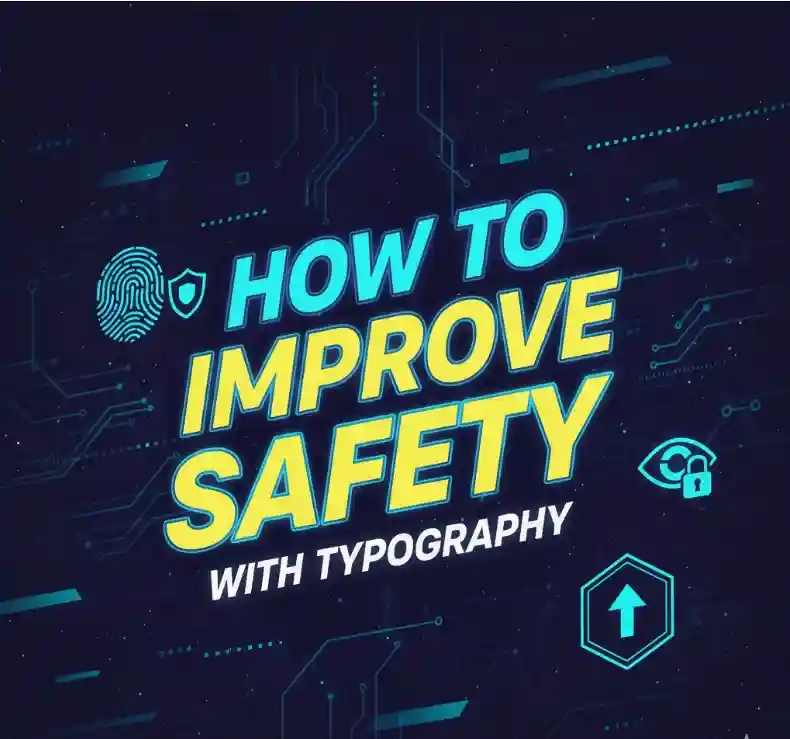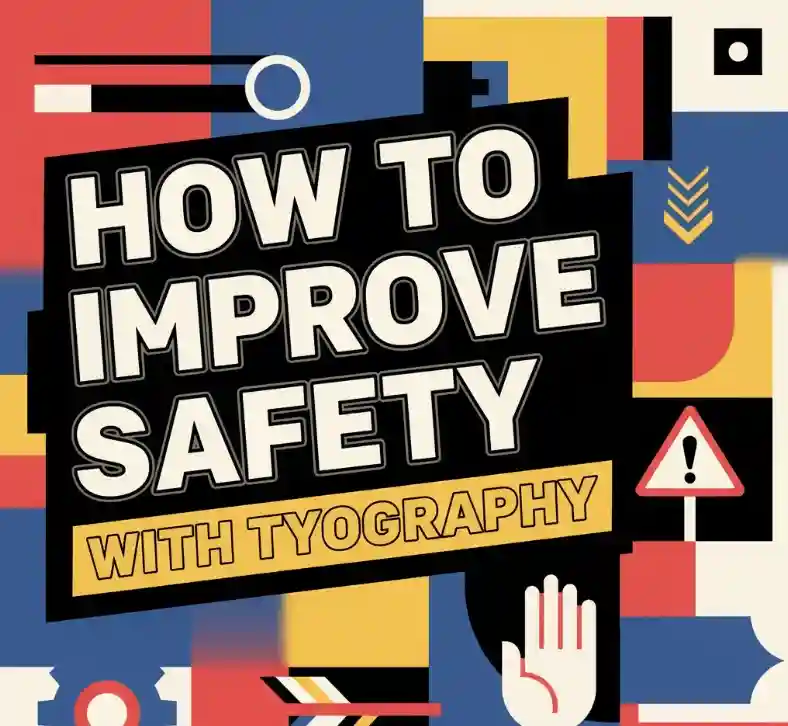Table of Contents
- Introduction
- Why Typography Matters in Safety
- Key Principles of Safety Typography
- Choosing the Right Fonts for Safety Communication
- Best Practices for Safety Sign Design
- Recommended Fonts from RaisProject
- Conclusion
- References

1. Introduction
Typography is more than aesthetics — it’s a matter of clarity and communication.
In safety-critical environments such as hospitals, factories, and transportation systems, typography helps people react faster and more accurately.
When done right, typography improves visibility, reduces confusion, and even prevents accidents.
This article explores how typography enhances safety, outlines design principles, and showcases fonts from RaisProject Studio crafted to combine readability and impact.
2. Why Typography Matters in Safety
Typography plays a critical role in user behavior and comprehension.
According to the Nielsen Norman Group, well-designed typography improves comprehension speed and reduces visual strain.
In transportation, the U.S. Department of Transportation has standardized fonts and layouts to ensure legibility in road signs, proving that font choice directly affects safety outcomes.
In healthcare, the World Health Organization emphasizes clear visual communication for effective information delivery in emergencies.
In short: good typography saves time — and time saves lives.
3. Key Principles of Safety Typography
- Legibility: Use fonts that are readable even in low-light or high-motion conditions.
- Contrast: Ensure high contrast between text and background (e.g., white on red, black on yellow).
- Hierarchy: Make essential information (e.g., “DANGER”, “EXIT”) visually dominant.
- Consistency: Stick to one or two font families for all signage to build recognition.
- Size & Spacing: Ensure adequate spacing and sizing for quick scanning at various distances.

4. Choosing the Right Fonts for Safety Communication
Different settings call for different typographic tones, but all share a common goal: readability first.
- Sans Serif Fonts: Great for body text and labels due to their clean design.
- Display Fonts: Bold and attention-grabbing — ideal for warning titles or hazard zones.
- Variable Fonts: Adaptable for digital dashboards or mobile interfaces.
5. Best Practices for Safety Sign Design
- Simplify: Keep messages short — clarity beats creativity.
- Color Code: Use color psychology (red for danger, yellow for caution, green for safety).
- Readable Distance: Test signs at realistic viewing distances.
- Lighting & Materials: Choose typefaces that remain legible on reflective or illuminated materials.
- Digital Optimization: On screens, avoid condensed fonts and use sufficient line spacing.
6. Recommended Fonts from RaisProject
Here are several fresh, valid, and professional fonts from RaisProject Studio that are ideal for safety, warning, or industrial design applications:
- Goswell Sans Serif Font – a clean and modern sans-serif font that maintains excellent readability in all conditions.
- Hailstone Display Font – powerful and decorative, suitable for attention-grabbing warnings.
- HanBold Sans Serif Font – bold and balanced, perfect for directional signage or emergency labels.
- Artlist Display Font – visually unique but still legible; great for creative yet functional communication.
- Etical Sans Serif Font – sleek and futuristic, suitable for tech or industrial environments.
- Out Of Topic Display Font – assertive and masculine, perfect for bold safety headlines.
Each font from RaisProject combines clarity, impact, and aesthetics, ensuring that critical safety information never gets overlooked.

7. Conclusion
Typography can save lives when designed with clarity and empathy.
Every decision — font, spacing, color — affects how fast people perceive information during emergencies.
By combining good design principles and professional, readable fonts, you create communication systems that enhance awareness and reduce risk.
To explore more fonts designed for performance and clarity, visit RaisProject.com.
8. References
- Nielsen Norman Group. Legibility, Readability, and Comprehension.
- Letterhend Studio. When Fonts Save Lives: Typography in the Medical and Safety World.
